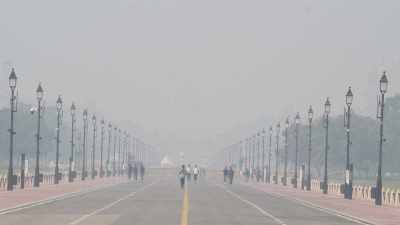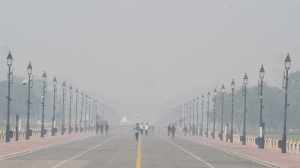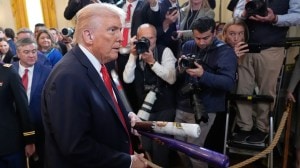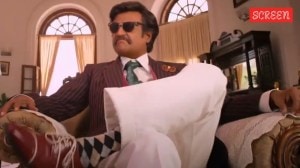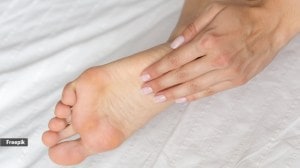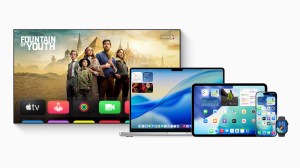Fighting for the right pitch
Call it Banzai, the Japanese battle cry. Or the Coca-Cola surprise. After all, Tokyo was the previous assignment of Donald Wilson Short, bef...

Call it Banzai, the Japanese battle cry. Or the Coca-Cola surprise. After all, Tokyo was the previous assignment of Donald Wilson Short, before he landed on the Indian shores to head the Atlanta-based beverage company’s operations in the subcontinent’s market. And his samurai approach is already making an cutting edge impact, enough for his rivals to sit up and take notice, Consider this.
Pepsi paid an undisclosed, fabulous amount for rights to the recent cricket tournaments in the subcontinent. But what the consumer witnessed was the repeated vision of the Coke red disc that hit the screen with all instant replays. Now call it Wakinama, or the Korean surprise. It was the first move from the Coke stable that disrupted the smooth sailing for Pepsi. And the move surprised market analysts, considering the fact that till recently, Coca Cola always maintained a stoic silence in face of some hostile Pepsi campaigns.
"Our strategy is now with promotional spins to help the consumer immediately link the product,"remarks Sanjiv Gupta, marketing director, Coca Cola India, while answering queries on the latest series, Don’t be a bandar, Taste the thunder for Thums Up, the nation’s leading carbonated drink. The series were in response to the Hindustan Thompson Associates (HTA)-designed Pepsi campaign involving Indian cricket sipper Mohammed Azharuddin chewing the willow, a veritable dig at the Coke’s three liner (Eat Cricket, Sleep Cricket, Drink Only Coca Cola). Now there remained a catch. Pepsi, like always, garnered its mainline campaigns towards the bandar series, little realising that the campaign ran only during the cricket season and Coca-Cola India, in the process, did some excellent tactical manouvering, thereby retaining the mainline Thums Up campaign that revolves around a river rafting expedition.
And the campaigns underlined the fact that the Cola giants would do almost anything and everything to grab both consumer attention and a slice of the market that is estimated at a whopping 206 million cases andgrowing at an encouraging pace of 16 per cent per annum. Coca-Cola India currently leads the table with a 54.7 per cent marketshare followed by Pspsi’s 40.4 per cent. According to a recent confidential survey done by the Operations Research Group (ORG-Marg) in as many as 23 major Indian cities, Coca Cola India’s brand led the show in 18 while Pepsi remained a front-runner in five.
While the giants are traditional rivals in almost every major market in the world, cricket is the battle ground for the two in India. Says Pepsi spokesperson Deepak Jolly, “We reserve a significant portion of our budget for cricket because it is the most popular sport in the Indian sub-continent. It would be wrong to give exact figures, but we normally end up spending between Rs 45-60 lakh on a tournament featuring Indian and other countries.” Coke is not far behind. Coke spends between Rs 60 crore to Rs 100 crore on adverstising every year, of which about 20 per cent is spent on cricket alone.
This year the batlle on tha airis creating waves. "I think the Azharuddin campaign is in the lines of some excellent work of creativity from HTA that keeps us going in the minds of millions of consumer. Spoofing is an art which very few companies can do with pride," says Jolly. Pepsi had scored with the much-publicised and highly successful one liner (Nothing Official About It) campaign during the last World Cup cricket that took the sheen out of the Coke campaign is now gone, completely. While the group fights tooth and nail with Coke for the Cola market, its trying hard to retain its hold in other brands, especially in cities where it is the market leader. And after three abortive launches of 7Up last year, the group is going ahead with the planned launch of Mirinda Lime, a new lime flavour this season.
Priced at Rs 8 for a 300 ml bottle, the product is a desparate attempt by Pepsi to garner a slice of the cloudy lime segmentt which forms nearly 10 per cent of the cold drinks market that had Limca, the Coke product, as the undisputedleader. "Competition has undergone a major change in the Indian market which is now fiercely competitive and vastly different from what it used to be earlier," says a senior director at Pepsi. The director, who spoke on conditions of anonymity, said clear instructions were there from the seniors to match Coke word by word. "The Indian market is too important to be taken lightly."
The battle lines are clearly drawn. And unlike the retaliatory moves from pepsi, Coke’s global signals with a tinge of Indianness is finding more approval from the consumer. "We plan to be everywhere the Indian consumer reaches…be it the Kumbh Mela, Dandiya Raas or the Calcutta Book Fair," says Vikas Gupta, Coca-Cola India marketing manager, adding: "In the Indian maret, we are currently selling over a 100 million cases from as many as 5,00,000 outlets. We will increase to 6,00,000 in 1998."
Not just this, aware of the power-starved Indian summer, Coca-Cola has found an unique tool for the Indian market. Metal boxes containinga base of ice, thereby eleminating the need for electricity. And the price. Rs 5 for a 200 ml cup. As many as 3000 of such 15 kilo carts will be rolling out in the dusty, pot-holed streets of the price-sensitive markets of Bihar, Uttar Pradesh, Gujarat and West Bengal this summer. A gameplan which Pepsi is trying to counter by launching its visi-coolers that keep the beverage chilled for more than eight hours in the event of a power failure.
And in an effort to acquire an Indian image, Coca-Cola is sponsoring events that are truly Indian. Late last year, it funded the installing of a statue of Mahatma Gandhi at the Martin Luther King Centre at Atlanta, agreed to pick up the tab for the (now delayed) rural games in Punjab and is the main sponsor for the ongoing cricket bonanza in Sharjah. Not just this, Thums Up, Maaza and Limca will now be regularly exported to countries like United Kingdom, Singapore, Middle East and Hong Kong, to garner more mileage among the Non Resident Indians (NRIs) and drive home asubtle message for those adversaries who claimed that the mandarins of Atlanta were not keen on marketing the Indian brands acquired from Parle in the much-publicised, $ 40 million deal in 1993. "The idea is to associate our brands with the passion of the Indian consumer," says Gupta.






- 01
- 02
- 03
- 04
- 05


